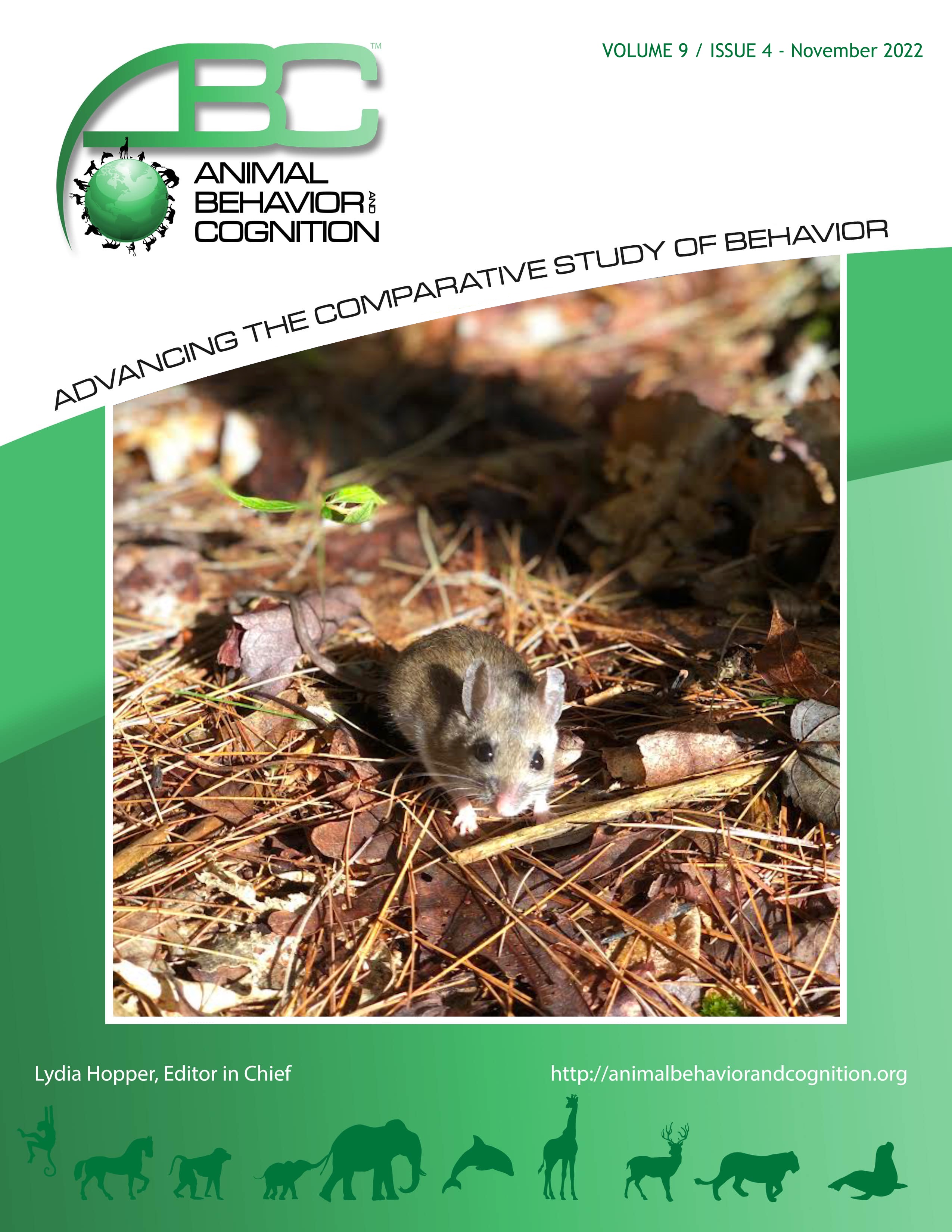Vol 9, Issue 4, November 2022
Temporary Behavioral Responses to Playbacks by a Pest Parrot and Implications for Management
Citation
Estien, C. O., O’Connell, C. L., Francis, X., Smith-Vidaurre, G., Kluever, B. M., Hobson, E. A., & van der Marel, A. (2022). Temporary behavioral responses to playbacks by a pest parrot and implications for management. Animal Behavior and Cognition, 9(4), 363-384. https://doi.org/10.26451/abc.09.04.01.2022
Abstract
Human-wildlife interactions continue to increase due to anthropogenic disturbances, with some interactions resulting in conflict. Leveraging a taxa’s bias for a particular sensory cue is a promising management avenue for reducing the potential and realized negative consequences of human-wildlife conflict. For instance, many avian species heavily depend on acoustic communication, and acoustic cues can provide opportunities to reduce conflict with various avian species. The monk parakeet (Myiopsitta monachus) is a gregarious parrot native to South America that has established populations worldwide and is considered an urban and agricultural pest in parts of its native and introduced ranges. We conducted playback experiments with a captive population of monk parakeets to evaluate auditory cues that may be useful for designing management protocols. Our experiment evaluated the efficacy of two stimuli: predator vocalizations as potential repulsion and conspecific vocalizations as potential attraction stimuli for parakeets. We measured two responses: (1) categorical group-level behavioral responses and (2) time to cease vigilance and return to behavior prior to playback. In the repulsion playbacks, monk parakeets were repelled by predator vocalizations in 80% of trials and took longer to cease vigilance and return to baseline behavior compared to attraction playbacks. In the attraction playbacks, monk parakeets exhibited vigilant behavior and weak or no attraction to the stimulus, with attraction only being observed in 10% of trials. Our results demonstrate that predator playbacks may be particularly useful for completing management objectives, such as temporary removal from a location.
Keywords
Playback experiments, Human-wildlife conflict, Acoustic cues, Wildlife management, Avian pests, Myiopsitta monachus
